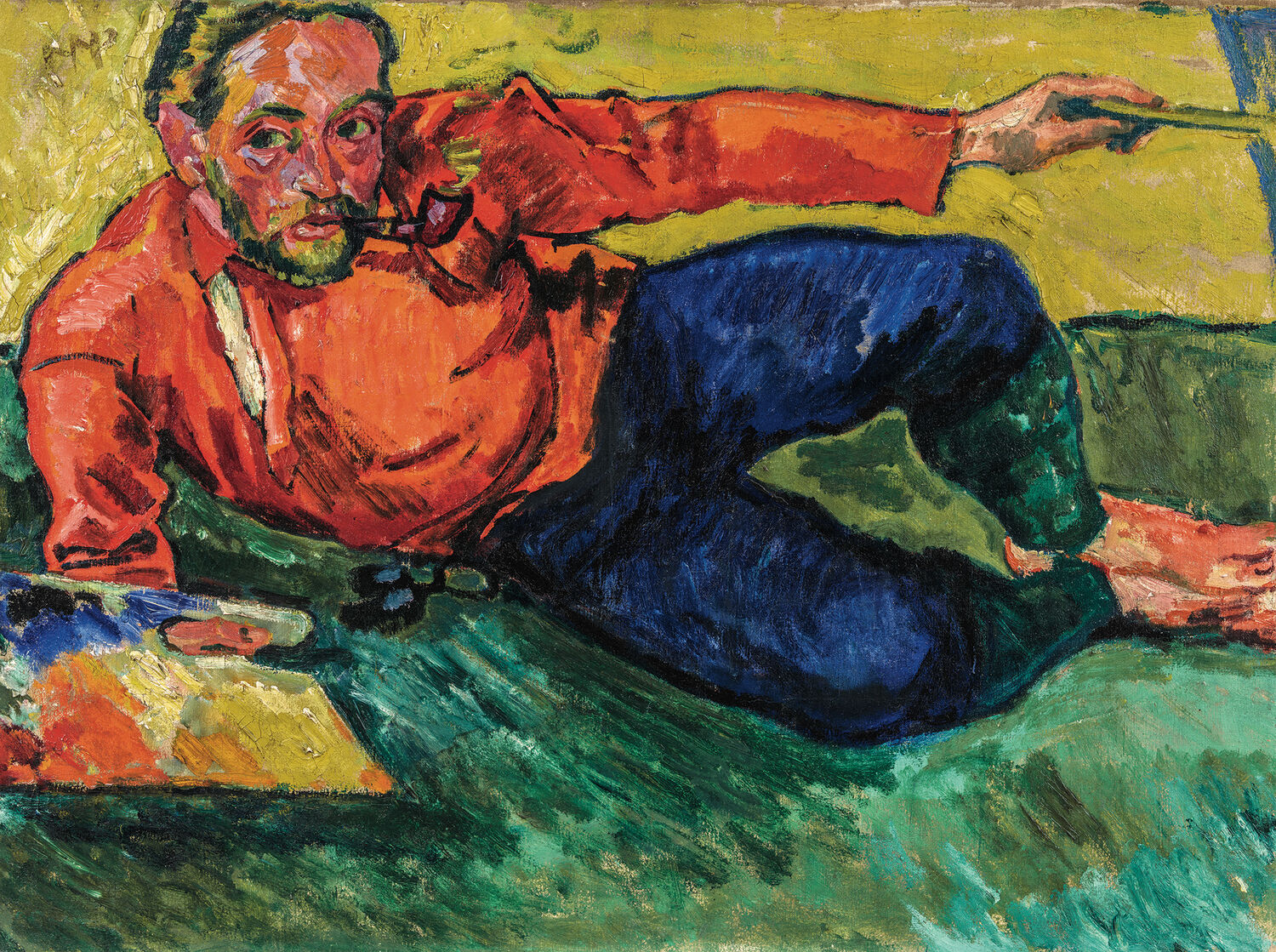15 Mar 24 — 30 Jun 24
Max Pechstein, Sunset at the Sea (detail), 1921, Dr. Roman Rubin
Max Pechstein, 1921

Max Pechstein (1881—1955) was a member of the "Brücke" artists' group in Dresden between 1906 and 1912, together with Ernst-Ludwig Kirchner, Erich Heckel, Emil Nolde and Karl Schmidt-Rottluff.
As Kirchner had succinctly stated in a woodcut in the progressive association's program, Pechstein also wanted to reproduce "directly and undisguised" what "urged him to create".
His primary concern was always to translate the emotions that he himself perceived, that moved him and that he explicitly sought out on countless journeys, so vividly that the later viewers would be able to perceive them with the greatest intensity. Color and its gestural application is the most important medium for conveying emotions that are felt to the viewer via the canvas. And this is precisely what the modernist era at the beginning of the 20th century stands for. Art became subjective through the changing use of color.
In almost all of Europe, artists were concerned with color freed from the object: in addition to the Brücke painters in Dresden, these included Edvard Munch in Berlin and Paris, the „Fauvists“ around Henri Matisse in France and the members of the artists' association „Der Blaue Reiter“ in southern Germany.




Max Pechstein, who trained as a decorative painter and then „saddled up“ with studies in arts and crafts under Otto Gussmann at the Dresden Academy of Art, nevertheless had a particular preference for „handmade“ prints in black and white.
The questions to be addressed in the exhibition „The Sun in Black and White“ using Pechstein as an example are: Why did an expressive painter, who was primarily concerned with emotions, voluntarily and not infrequently do without the decisive, newly found „tool of color“? How did he compensate for this „deficit“ at the same time? What added value did he recognize in it and how did he know how to use the high-contrast black and white for his art?
In order to work this out and make it directly comprehensible for visitors, all of the artist's main themes – such as nude/figure, stage/dance, South Seas/Italy, boats/fishermen/heads, war, family and religion – which he cultivated (with the exception of war) throughout his entire creative period, are presented in color and black and white works. Precisely selected paintings from one thematic area are juxtaposed with prints: woodcuts, etchings and lithographs.
In cooperation with the Kunstsammlungen Zwickau – Max Pechstein-Museum, the Brücke Museum Berlin and the Max Pechstein Urheberrechtsgemeinschaft, Hamburg/Berlin